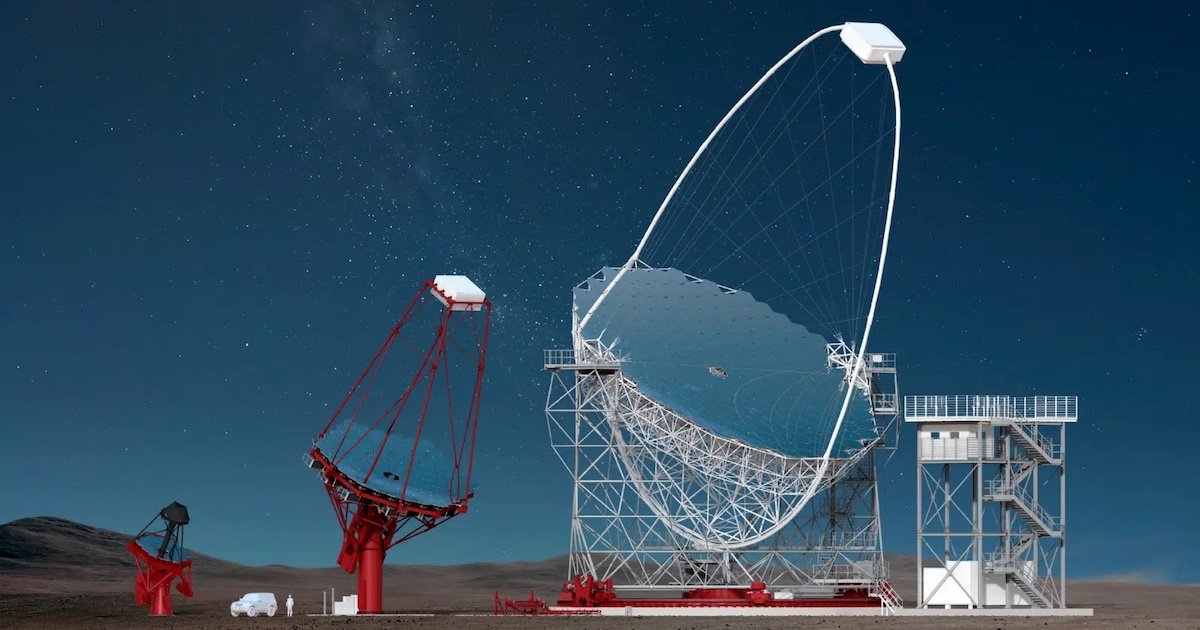Bologna, Italy, 7 January 2025 – On January 7, 2025, the European Commission established the Cherenkov Telescope Array Observatory (CTAO) as a European Research Infrastructure Consortium (ERIC), furthering its mission to become the world’s largest and most powerful observatory for gamma-ray astronomy. The creation of the CTAO ERIC will enable the Observatory’s construction to advance rapidly and provide a framework for distributing its data worldwide, significantly accelerating its progress toward scientific discovery.
“The ERIC will streamline the construction and operation of the Observatory in a way that will undoubtedly help the CTAO attract new talent and investment as it continues to grow,” stated Dr. Aldo Covello, Chair of the Board of Governmental Representatives (BGR). “The ERIC status provides the CTAO with the legal stability and administrative advantages it needs to be sustainable in its worldwide operations and impact.”
The CTAO ERIC was established with the international support of 11 countries and one intergovernmental organisation that contribute to the technological development, construction and operation of the Observatory. The BGR represents this group and has been responsible for the preparation of the ERIC.
“We are grateful to our founding members for their support and to the European Commission for reaffirming their confidence in the CTAO as a world-class research infrastructure,” said Dr. Stuart McMuldroch, CTAO Managing Director. “This milestone represents the culmination of years of dedicated planning by the diverse teams contributing to the success of the Observatory. With the CTAO ERIC, we now have a powerful instrument to consolidate our efforts and drive the project forward.”
The ERIC not only provides the Central Organisation with a formal framework to accept and operate the current telescope prototypes, but it also allows for the immediate start of construction for the full array of more than 60 telescopes across both telescope sites in Spain and Chile. On the CTAO-North site, where the Large-Sized Telescope prototype (LST-1) is under commissioning, three additional LSTs and one Medium-Sized Telescope (MST) are expected to be built in the next 1-2 years. Meanwhile, on the CTAO-South site, the first five Small-Sized Telescopes (SSTs) and two MSTs are expected to be delivered by early 2026. Thus, with the aid of the ERIC, the Observatory is expected to be able to operate intermediate array configurations as early as 2026. These sub-sets of the final arrays will already be more sensitive than any existing instrument, bringing the Observatory’s early science within reach.
The impact of the ERIC will extend beyond hardware, influencing several other key areas. In the coming months, the Observatory will prepare to integrate and operate advanced software designed to control the telescopes and their supporting devices on-site, as well as to manage data processing. Additionally, the ongoing recruitment campaign will continue across all CTAO facilities, including the CTAO Headquarters in Italy and the CTAO Science Data Management Centre in Germany, ensuring robust support for these developments.
The CTAO was promoted to a “Landmark” on the European Forum on Research Infrastructure (ESFRI) Roadmap 2018 and was ranked as the main priority among the new ground-based infrastructures in the ASTRONET Roadmap 2022-2035. Now, after years of extensive preparatory work, and with the final legal entity in place, the CTAO solidifies its standing in the global research community, facilitating synergies with other international organisations and observatories.
“The ERIC status strengthens the presence of the CTAO in Europe and its role as a key player in the European Research Area, but the support we have received and the scope of the CTAO ERIC’s influence goes far beyond European borders,” explained Prof. Federico Ferrini, co-Managing Director. “To build and operate the world’s largest gamma-ray observatory that serves the ambitious needs of the global scientific community, we are counting on an increasing number of partners from around the world.”
The CTAO ERIC Members are Austria, Czech Republic, European Southern Observatory (ESO), France, Germany, Italy, Poland, Slovenia and Spain. Additionally, Switzerland is an Observer, Japan is a Strategic Partner and Australia is a Third Party.





